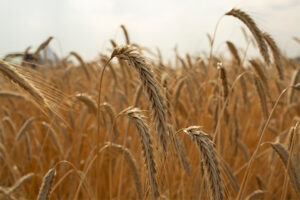Discover what FP’s Director of Commercialization, Nathan Penner, and our Manitoba Territory Manager, Chad Yanchycki, have to say, on why FP Genetics’ development of Hybrid Fall Rye in Canada is an exciting time for your farm:
Over the past 10 years, FP Genetics has worked with European varieties of hybrid fall rye to find durable, high-performing varieties for Canadian growers.
Today, the seed genetics and distribution company makes it easy for farmers to reap rye’s rewards, offering the latest varieties along with access to a deep knowledge of the crop offered by the company’s experts.
Markets for rye in Western Canada are expanding. Whether it be for whiskey, commercial grain, food, seed, ethanol or cover and forage crops, this versatile cereal is trending upwards.
Not your grandfather’s fall rye
For decades across Canada, the same genetic varieties of OP Fall Rye have been grown. Little change in performance led to slow waning of farmer interest and an opportunity for FP Genetics to revitalize the crop. They looked to Europe for hardy, high-yielding hybrid varieties that have now proven themselves on Prairie fields.

Manitoba Territory Manager
Chad Yanchycki, Manitoba Territory Manager at FP Genetics, says there’s a lot of optimism for this year’s new offerings.
“We’re extremely excited to launch SU Performer and SU Cossani,” he says.
“Fall rye growers in Canada can expect to see good yields, good standability, excellent winter hardiness and really good fall vigour.”
Rye eases easily into the rotation
Growing fall rye can take pressure off growers in the spring, relieving stress in wet years where it’s tough to get in the field early.
In drier times, the hybrids still shine, needing less water and fertilizer to achieve strong yields.

Director of Commercialization
FP Genetics Director of Commercialization Nathan Penner says the new hybrids are a significant upgrade over traditional varieties, offering gains such as better standability and yield increases of 20 to 40 per cent.
As for disease, Penner says it’s “nearly bulletproof,” against stem rust and most pathogens. Ergot can be a concern but even there, the hybrids manage better thanks to what, FP Genetics’ calls the Xenia Surge effect.
“Since rye is a cross-pollinating crop, it’s about providing two sources of pollen across a greater window of time to reduce infection by ergot and increase heterosis (hybrid vigour), spread risk and increase consistency of pollination,” Penner says.
SU Cossani and SU Performer root and tiller quickly in the fall, providing seed bed cover, choking out weeds and guarding against erosion.
“You’ll notice with the hybrid rye specifically that it really crawls and covers ground really fast,” Yanchycki says. “You get an extensive root system that will go deep. You’re going to hold your soil going into winter.”
An overlooked market gains strength
Rye has made a market resurgence, driven by demand for cover crops and from distilleries and other customers.
“As somebody who’s dealt with rye for several years, these are some of the best years I’ve seen and I think it’s an extremely exciting time for growers to grow right now,” Yanchycki says.
Rye’s diverse uses are also a strength. What could start out as a crop grown for feed might instead be sold for seed or to a local distillery.
FP Genetics’ TruCover program helps this along, allowing growers to sell their crop through an authorized dealer network, who can then sell it as seed into the US cover crop market.
“Hybrid rye growers were previously only allowed to sell their production into grain or feed markets, but now we’re expanding market opportunities,” Penner says.
As for buying seed, FP Genetics has adapted their distribution model to make it easier for farmers to get the quantities they want, whether in totes for 30 or 40 test acres, or in bulk for entire fields.
A powerful new rye partnership
Adding to this capacity is Alberta company SeedNet, which has partnered with FP Genetics to collaborate on seed production, distribution and variety evaluation. The two companies have taken parallel paths, by adapting European varieties, with FP Genetics introducing hybrid rye to Canada in 2014.
SeedNet has focused on developing hybrid rye markets for both grain and silage. Many of their customers grow it in double-crop rotations under irrigation. With rye maturing earlier than other cereals, there’s time to get in another silage crop in the fall.
“They have a wealth of experience in terms of seed production and seed processing,” Yanchycki says. “You combine that with FP’s distribution network and marketing efforts as well as our trialing network where we’re evaluating and bringing new varieties to market – it’s an incredibly strong collaboration.”
Expert knowledge, personal service and high-performance seed
FP Genetics’ extensive experience with hybrid rye in Canada is built upon an extensive R&D program and is informed through feedback from farmers.
“We love helping people get comfortable growing rye,” Yanchycki says. “Our whole team at FP puts their wealth of knowledge behind growers to give them the best chances of success.”
This knowledge includes direct, personal advice to farmers based on their local and regional conditions. The company also offers a re-seed benefit to further reduce uncertainty if a crop doesn’t survive the winter.
To learn more, visit hybridfallrye.ca online or call 1-877-791-1045.

Hybrid rye offers farmers numerous advantages in terms of reduced management time and enhanced resilience in challenging conditions. Unlike spring crops, hybrid rye is fall-seeded, enabling earlier harvesting and efficient utilization of existing equipment and labor during downtime
Click link to view Western Producer’s editorial: